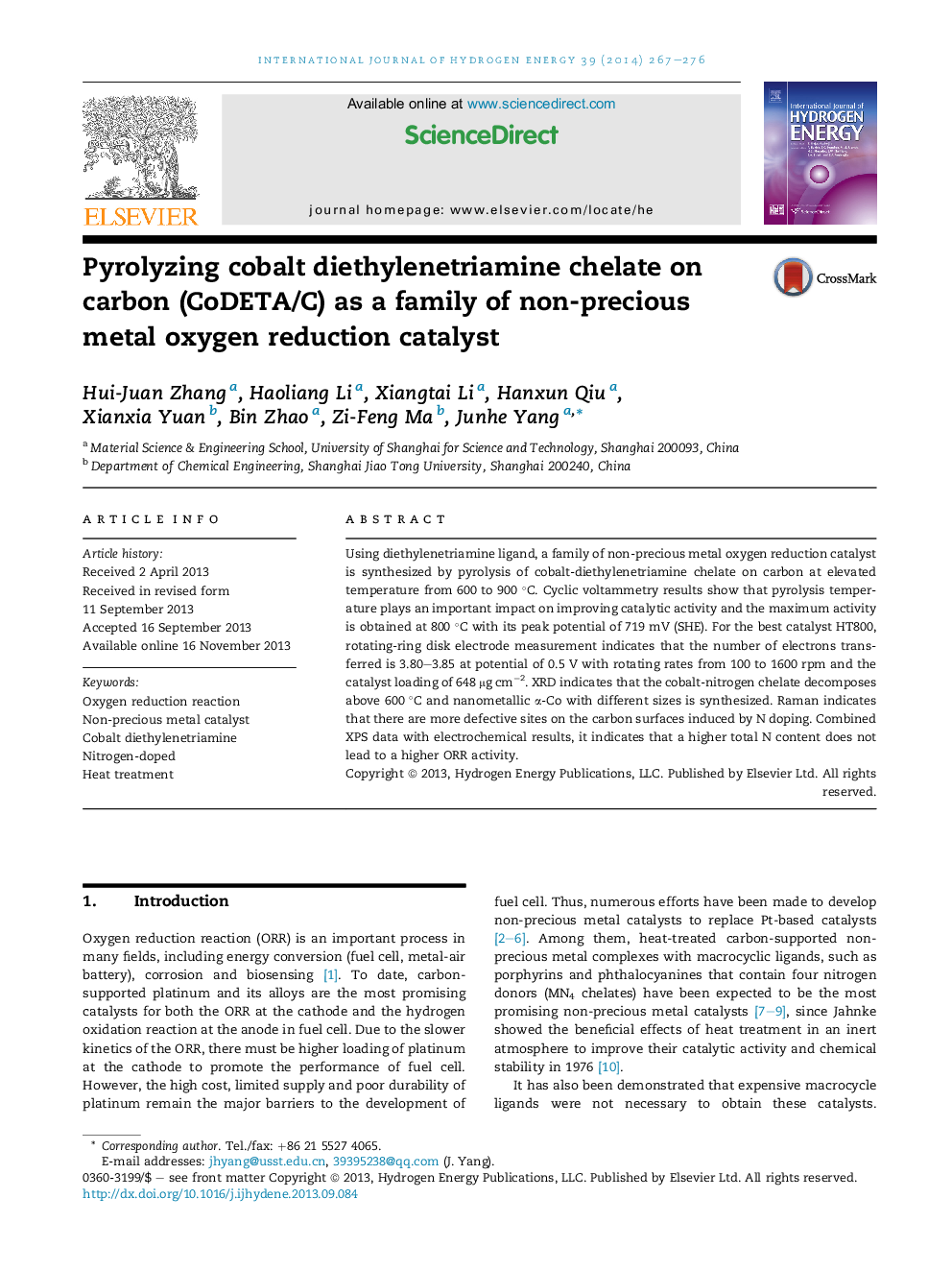| Article ID | Journal | Published Year | Pages | File Type |
|---|---|---|---|---|
| 1273938 | International Journal of Hydrogen Energy | 2014 | 10 Pages |
•Pyrolyzing CoN3 non-macrocycle chelate on carbon as oxygen reduction catalyst.•A maximum activity is obtained at 800 °C with its Ep = 719 mV (SHE).•The ORR mechanism for HT800 is mainly a 4e reaction path with its n = 3.85 at 0.5 V.•N-doping on carbon and α-Co with different sizes are present after pyrolysis.•A higher total N content in the catalyst does not lead to a higher ORR activity.
Using diethylenetriamine ligand, a family of non-precious metal oxygen reduction catalyst is synthesized by pyrolysis of cobalt-diethylenetriamine chelate on carbon at elevated temperature from 600 to 900 °C. Cyclic voltammetry results show that pyrolysis temperature plays an important impact on improving catalytic activity and the maximum activity is obtained at 800 °C with its peak potential of 719 mV (SHE). For the best catalyst HT800, rotating-ring disk electrode measurement indicates that the number of electrons transferred is 3.80–3.85 at potential of 0.5 V with rotating rates from 100 to 1600 rpm and the catalyst loading of 648 μg cm−2. XRD indicates that the cobalt-nitrogen chelate decomposes above 600 °C and nanometallic α-Co with different sizes is synthesized. Raman indicates that there are more defective sites on the carbon surfaces induced by N doping. Combined XPS data with electrochemical results, it indicates that a higher total N content does not lead to a higher ORR activity.
